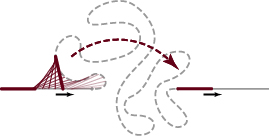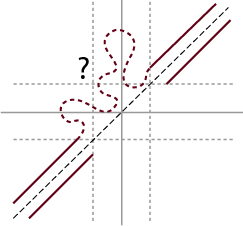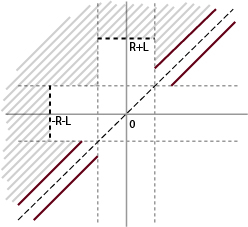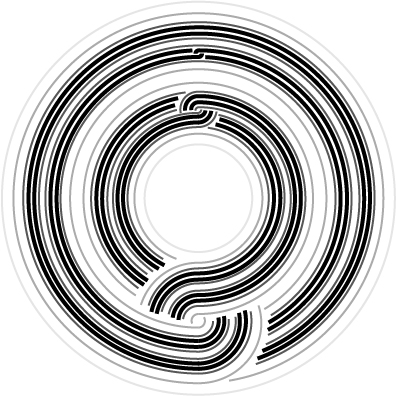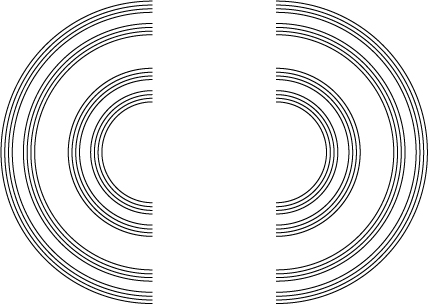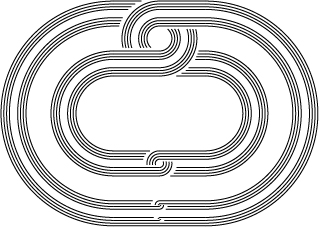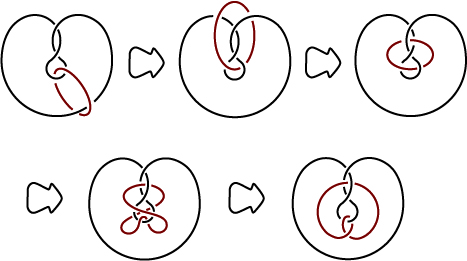About a year ago, I came up with an simple argument for the following simple theorem that appeared in a paper of professor Guth’s:
Theorem: If is an open set in the plane with area
, then there is a continuous function
from
to the reals, so that each level set of
has length at most
.
Recently a question of somewhat similar spirit came up in a talk of his:
Question: Let be a Riemannian metric on the torus with total volume
, does there always exist a function
s.t. each level set of
has length at most
?
I have some rough thoughts about how might a similar argument on the torus look like, hence I guess it would be a good idea to review and (somewhat carefully) write down the original argument. Since our final goal now is to see how things work on a torus (or other manifolds), here I would only present the less tedious version where is bounded and all boundary components of
are smooth Jordan curves. Here it goes:
Proof: Note that if a projection of in any direction has length (one-dimensional measure)
, then by taking
to be the projection in the orthogonal direction, all level sets are straight with length
(see image below).
Hence we can assume any -dimensional projection of
has length
. A typically bad set would ‘span’ a long range in all directions with small area, it can contain ‘holes’ and being not connected:
Project onto
and
-axis, by translating
, we assume
. Look at the measure
set
in the middle of
(i.e. a measure 1 set
with the property
)
By Fubini, since the volume is at most
, there must be a point
with
:
Since the boundary of is smooth, we may find a very small neighborhood
where for each
. (we will call this pink region a ‘neck’ of the set for it has small width and is roughly in the middle)
Now we define a that straches the neck to fit in a long thin tube (note that in general
may not be connected, but everything is still well-defined and the argument does go through.) and then bend the neck to make the top chunk vertically disjoint from the bottom chunk.
We can take so that
sends the vertical foliation of
to the following foliation in
(note that here we drew the neck wider for easier viewing, in fact the horizontal lines are VERY dense in the neck).
If the -projection of the top or bottom chunk is larger than
, we repeat the above process t the chunks. i.e. Finding a neck in the middle measure
set in the chunk, starch the neck and shift the top chunk, this process is guaranteed to terminate in at most
steps. The final
sends
to something like:
Where each chunk has -width
between
and
.
Define .
Claim: For any .
The vertical line intersects
in at most one chunk and two necks, taking
of the intersection, this is a PL curve
with one vertical segment and two horizontal segment in
:
The total length of is less than
(length of
on the vertical segment)
(length of
on each horizontal segment). Pick
both less than
, we conclude
.
Establishes the theorem.
Remark:More generally,any open set of volume has such function with fibers having length
. T he argument generalizes by looking at the middle set length
set of each chunk.
Moving to the torus
Now let’s look at the problem on , by the uniformization theorem we have a flat torus
where
is a lattice,
and a function
s.t.
is isometric to
.
is the flat metric. Hence we only need to find a map on
with short fibers.
Note that
and the length of the curve from
to
in
is
.
Consider as the parallelogram given by
with sides identified. w.l.o.g. assume one side is parallel to the
-axis. Let
be a linear transformation preserving the horizontal foliation and sends the parallelogram to a rectangle.
Let be a piece-wise isometry that “folds” the rectangle:
(note that is four-to-one except for on the edges and the two medians)
Since all corresponding edges are identified, $lates F$ is continuous not only on the rectangle but on the rectangular torus.
Now we consider , pre-image of typical horizontal and vertical lines in the small rectangle are union of two parallel loops:
Note that vertical loops might be very long in the flat due to the shear while the horizontal is always the width.
(to be continued)












